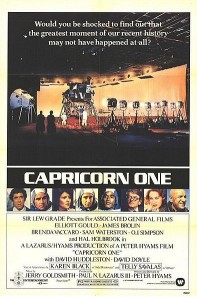“Did SO!”
Roger Launius, a senior curator in the National Air and Space Museum’s Space History Division, recently gave a talk near the Museum’s newly restored Lunar Module called “Apollo and the So-Called Moon Landing Hoax” (allow pause for an eye-roll). He drew quite a crowd, including many museum employees…

Roger Launius, a senior curator in the National Air and Space Museum’s Space History Division, recently gave a talk near the Museum’s newly restored Lunar Module called “Apollo and the So-Called Moon Landing Hoax” (allow pause for an eye-roll). He drew quite a crowd, including many museum employees, most notably fellow Space History senior curator David DeVorkin, who donned a tin-foil cap to discourage alien interference.
Launius pointed out the American addiction to conspiracy theories, which, with the dawn of the Internet, proliferated rampantly. Today, he said, there are a thousand Web sites dedicated to the moon hoax, some of which debunk it, some of which uphold it. In 2001, a Fox News Channel documentary (and he admitted to using the term loosely) titled “Did We Land?” got viewers in a dither all over again. At the time, Launius was the NASA historian, and he recalls issuing fact sheets and pamphlets to frantic parents and teachers who needed to know what to tell kids to convince them that yes, we did.
Polls today show that some six percent of the general population question the success of the lunar program, although Launius pointed out that with an error factor of plus or minus three percent, it’s a rather useless number. However, among 18- to -24-year-olds, who know Apollo only through grammar-school history class, 27 percent are doubters.
“It would be cool to go again,” Launius told the crowd, “just to prove that we did."